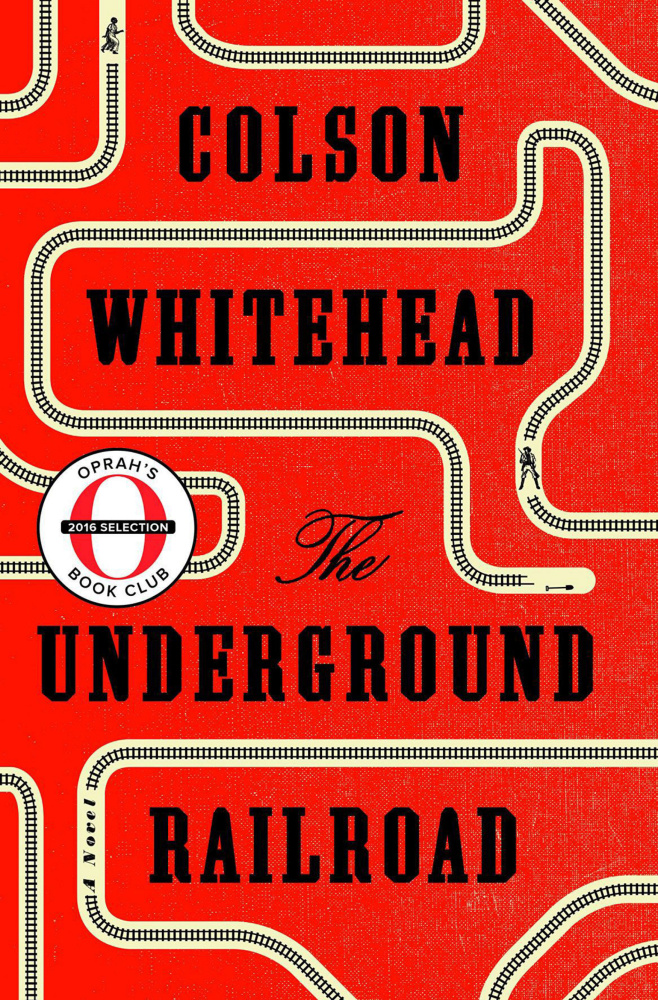The calendar year hasn’t even slipped into September, and Colson Whitehead’s “The Underground Railroad” is already being talked about as the book of the year (and that’s with a slew of big books heading our way in the fall, including works from Ann Patchett, Zadie Smith and Jonathan Safran Foer).
Oprah Winfrey chose “The Underground Railroad” for her Book Club 2.0 (which may carry somewhat less weight than her earlier announcements on “The Oprah Winfrey Show” but is still a powerful force for selling books and encouraging reading). Publisher Doubleday shipped the novel out a month early after that happy news, and The New York Times published a long print-only excerpt.
So does “The Underground Railroad” live up to the hype? Yes, and that shouldn’t be a surprise. Whitehead has always been a smart, inventive, versatile writer, and his creative premise immediately demands your attention: What if the Underground Railroad were literally a working railroad, tracks buried deep beneath the plantations and the swamps and the fields and the towns, carrying escaped slaves northward to safety?
Author of such novels as “John Henry Days,” “Sag Harbor” and “The Intuitionist,” Whitehead has delved into speculative fiction before with “Zone One,” his zombie novel (and a damned good zombie novel at that). In “The Underground Railroad,” he blends fact and fiction seamlessly in this story about Cora, a young woman enslaved on a Georgia cotton plantation who makes the bold decision to join another slave, Caesar, in an attempt to escape.
Escape, it seems, is in Cora’s blood. Not for her grandmother Ajarry, who lived out her life on the Randall plantation after being kidnapped from her African village (“It was hard to say how much they paid for her in Ouidah as she was part of a bulk purchase, eighty-eight human souls for sixty crates of rum and gunpowder.”).
But Cora’s mother, Mabel, fled Randall when Cora was a girl, and she never returned. Mabel is a myth, a legend: the one who got away. She wasn’t captured like most of the other runaways, never found stumbling lost through the swamp, never trapped trembling in a barn or sweltering in an attic. She didn’t return to Randall chained and broken, was never beaten or tortured or lynched as an example to anyone who still dreamed of fleeing.
Cora hasn’t forgiven her mother for the abandonment, but she can’t help but learn Mabel’s lesson. When her already bleak life on the plantation takes a turn for the worse – a horror that seems impossible and yet isn’t – she reconsiders Caesar’s proposition.
Their flight leads them to the southernmost spur of the railroad’s tunnels, a marvel of industry, intelligently designed and executed. “Who built it?” Caesar asks. The answer: “Who builds anything in this country?”
The rules of the railroad are simple. You ride in the boxcar; you don’t sit up front with the engineer. You won’t be sure where you will end up. But it will be north and away from those in pursuit (in Cora’s case, the dreaded and legendary slave catcher Ridgeway, who is determined to bring her back because her mother eluded him). The train tracks are trickery, laid out in endless dead ends and spurs to nowhere, the better to confuse authorities if they’re discovered.
Whitehead envisions the world outside the Randall plantation as a series of increasingly terrifying fever dreams, each stage of Cora’s journey a fresh hell to be negotiated. She emerges first in South Carolina, where black men and women are free to work and learn and carry on their lives out of bondage. But the freedom is deceptive, illusory, not freedom at all. Worse awaits in North Carolina and Tennessee (“If Tennessee had a temperament, it took after the dark personality of the world, with a taste for arbitrary punishment.”).
Though the story is mostly Cora’s, Whitehead spares brief passages for other characters – Caesar, Mabel, even Ridgeway, who has dedicated himself to destroying the underground railroad. He sees his violent calling as a necessary evil. “In another country they would have been criminals,” Whitehead writes of Ridgeway and his patrollers, “but this was America.”
“The Underground Railroad” is a thrilling, relentless adventure, an exquisitely crafted novel that exerts a deep emotional pull. It’s an alternate history with a bite and a heart. But Whitehead’s greatest skill is that he also forces us to consider the messy, ugly state of race relations today the further we immerse ourselves in Cora’s nightmare worlds.
“America,” he writes, “is a delusion, the grandest one of all. … This nation shouldn’t exist, if there is any justice in the world, for its foundations are murder, theft and cruelty. Yet here we are.” True. But a book like “The Underground Railroad” – a masterpiece, let’s just say it – can put our tattered, ugly past in perspective and maybe help us forge some kind of better future.
Send questions/comments to the editors.


